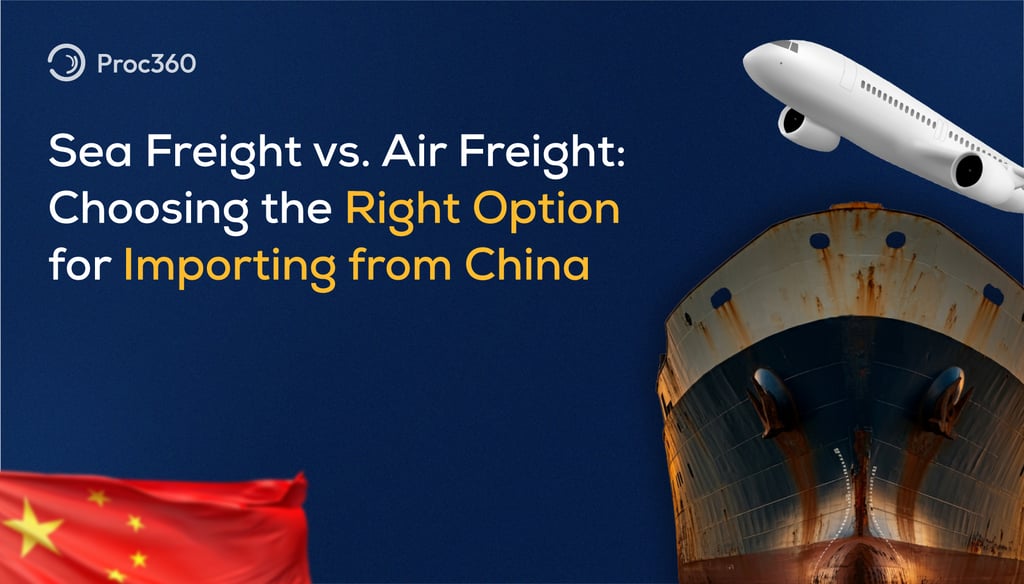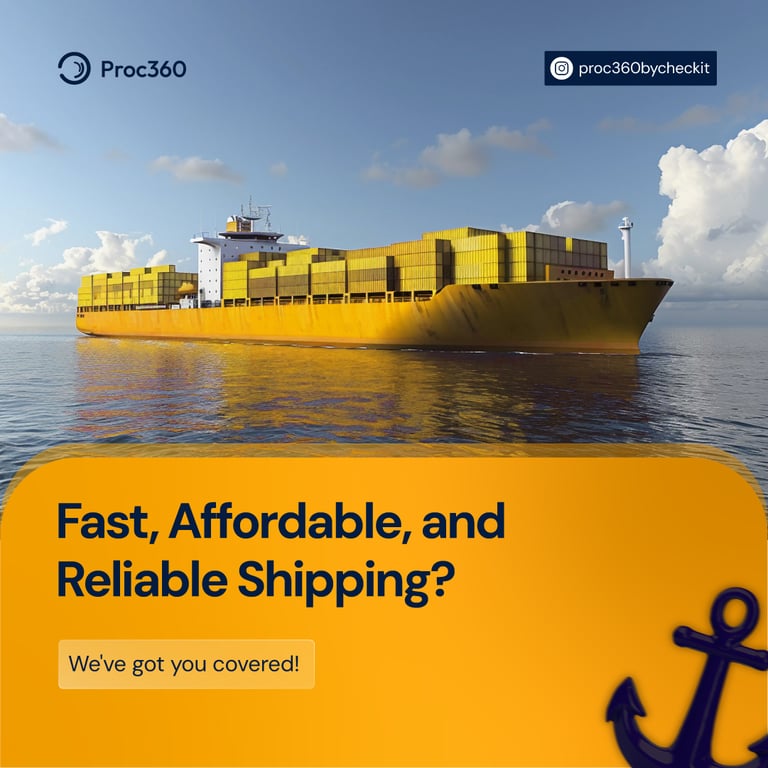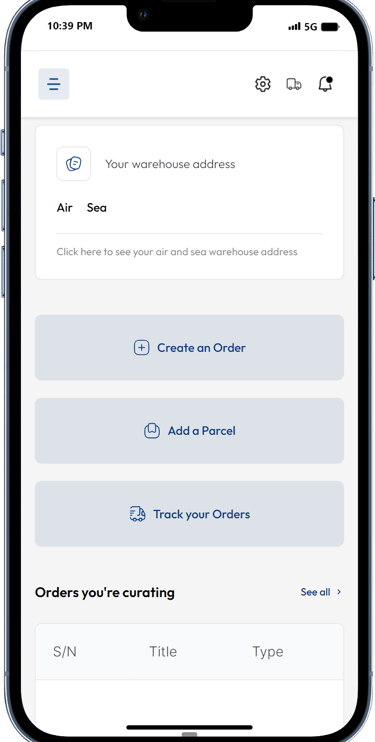Sea Freight vs. Air Freight: Choosing the Right Option for Importing from China
Discover the pros and cons of sea freight versus air freight for importing from China. Learn how Proc360 simplifies cost-effective, efficient shipping solutions.
GROWING BUSINESSSMALL BUSINESS
Esther Dada
1/1/20253 min read
When it comes to importing goods from China, businesses are often faced with one crucial decision: Should I ship by sea or by air? Both sea freight and air freight have unique advantages and challenges, and your choice can significantly impact your bottom line, delivery timeline, and customer satisfaction. Let’s explain the differences, their pros and cons, and why sea freight might be your cost-effective solution—especially when paired with Proc360 to simplify the entire process.
Sea Freight: The Steady and Cost-Effective Route
Sea freight has been the backbone of international trade for centuries. When you’re moving large volumes of goods, nothing beats the capacity and affordability of shipping by sea. It’s the go-to option for businesses importing from China when timelines are flexible, and budgets need to stretch further.
One of the most significant advantages of sea freight is its cost-effectiveness. Shipping containers can hold massive quantities of goods, which drastically reduces the cost per unit. This is particularly advantageous if you’re importing in bulk—furniture, electronics, machinery, or even textiles. The larger the shipment, the more you save.
However, sea freight is not without its challenges. It requires careful planning and patience. Transit times can range from 20 to 40 days or even longer, depending on the port of origin and destination. But here’s the interesting part; with Proc360, managing the sea freight process becomes seamless. From consolidating orders to tracking shipments, Proc360 ensures you stay in control and avoid unnecessary delays.
With good planning and the right support system in place, sea freight becomes less of a hurdle and more of a strategic move for your business.
Air Freight: Speed Meets Convenience
On the other hand, air freight is the king of speed. If your business needs products quickly, perhaps due to sudden demand or the nature of goods (Perishable goods), air freight ensures your goods arrive in days rather than weeks. It’s the best choice for high-value, time-sensitive goods like electronics, fashion items, or perishable goods.
The convenience of air freight extends beyond speed. It’s also highly reliable in terms of schedules. Flights operate daily, and delays are rare compared to the unpredictability of sea freight, which can be affected by weather or port congestion.
But this convenience comes at a premium. Air freight is significantly more expensive than sea freight, and the cost increases with the weight and volume of your shipment. For businesses importing smaller quantities or high-value goods, this might be manageable. However, for bulk shipments, the costs can quickly add up.
At Proc360, we understand the unique challenges businesses face when choosing between air and sea freight. Our platform provides the opportunity to weigh the options, compare costs, and make the best decision for your business needs.
Why Sea Freight is the Smart Choice for Bulk Importing
If your goal is to optimize costs while importing goods from China, sea freight is the clear winner provided you plan ahead. It allows you to transport large quantities at a fraction of the cost of air freight. For businesses looking to maintain healthy profit margins, especially in industries with tight competition, this can make all the difference.
Timing is the key to leveraging sea freight effectively. By forecasting your inventory needs and planning shipments months in advance, you can avoid the panic of last-minute air freight expenses. And with Proc360’s end-to-end logistics solutions, you can consolidate orders, pay suppliers securely, and ensure quality checks; all from one app.
Proc360 simplifies the complexity of sea freight, helping you save both time and money. With real-time shipment tracking and support at every step, you can focus on scaling your business while we handle the logistics.
Balancing Cost and Speed
The choice between sea freight and air freight often boils down to your business priorities. If you value speed and can afford higher costs, air freight is ideal. However, if cost efficiency and bulk shipping are your main objectives, sea freight is unbeatable.
Many businesses use a combination of both. For instance, they might rely on air freight for small, urgent shipments and sea freight for regular bulk orders. Proc360 supports this hybrid approach by providing tailored solutions for both shipping methods, ensuring your goods get where they need to be, on time and within budget.
Final Thoughts: Plan Smart, Ship Smarter with Proc360
Importing from China is a cornerstone of many businesses, and choosing the right freight method is a critical decision. While air freight offers unparalleled speed, sea freight shines as a cost-effective solution for those willing to plan ahead.
With Proc360, you don’t have to navigate these decisions alone. Our platform is designed to make importing from China simple and efficient. Join over 1,000 businesses already using Proc360 to grow their operations. Let us help you plan smarter, ship smarter, and build a supply chain that drives your business forward.
So, the next time you’re faced with the sea vs. air debate, remember: With Proc360, the choice becomes clear.






